Yet another surfing legend has left us. Freddie Groskruetz has died after losing a long battle with cancer. Freddie was highly regarded laminator who glassed thousands of boards for virtually every major manufacturer on the space coast,most notably for Quiet Flight Surfboards.
Freddie was a devout Christian who was known for laminating an image of Jesus on the deck of all of his personal boards. Freddie was one of the earliest proponents of the twin fin fish surfboard design, riding them almost exclusively for over forty years. The North Shore surf spot Freddieland, down the beach from Velzyland, was named after him.
This profile of Freddie was Written by Barry Dix in February 2011 for the Beachside Resident:
Boardrider of the Month: Freddie Grosskreutz
Interview by Barry DixIn August 2010, local surfing legend and East Coast surfing Hall of Fame inductee Freddie Grosskreutz started feeling weak and losing weight. While visiting his daughter Tamsin, a second-year medical student studying in Kansas City, Freddie shocked her with the change in his appearance. Tamsin ordered a series of tests for him, resulting in a diagnosis of advanced carcinoid liver cancer. Since then, Freddie has had two surgeries and is scheduled for more soon.
Born in Newark, New Jersey in 1948, and having grown up in Virginia Beach, Freddie and childhood friend Bobby Chenman caught the surfing bug during the early 1960s. Both went down to the local sporting goods store and purchased Healthway’s pop-out longboards for their first session. Freddie progressed rapidly and was approached by the top surfboard manufacturers of the day — Hobie and Weber — to be on their East Coast Surf Teams. In the late ’60s, Fred was ranked 4A by the Eastern Surfing Association before the existence of any professional surfing organizations.
Surfing trips eventually expanded to Mexico and Puerto Rico and Freddie took his first trip to Oahu and Kauai in 1969. On Oahu, living above Velzyland in a shack, he surfed the famous spot frequently. When the surf stars and cameras came out, Freddie would venture to a nearby left, which he could usually surf by himself, or with other shack dwellers Phillip Irons and Ricky Hendrickson. After Fred departed Hawaii, Phil and Ricky named the Left “Freddieland,” which the break between Sunset Point and Velzyland is called to this day. No other east coast surfer has ever had a break in Hawaii named after them.
Freddie later settled in Brevard County and was approached by Sam Gornto to laminate for Happiness Surfboards on Manatee Lane, the same shop Pat O’Hare, Bill Eberwein, Bob Freeman, and Claude Codgen worked out of. During the early ’70s, boards were glassed with opaque resins, cut laps on both sides, pinlines, and high-gloss jobs. Fred also worked with Fox Surfboards (John Parton) of West Palm Beach, Ocean Avenue (Lewis Graves) of Melbourne Beach, and for many years, Dick Catri of Indialantic.
For the last 20 years, Freddie has been laminating for Jim and Ed Leisure of Quiet Flight Surfboards in Cocoa Beach. Now 62, Freddie still rides a short 5’5″ fish, a shape he’s pretty much stayed with for over 30 years. Besides surfing, Freddie’s faith and family are his backbone and strength. He met his beautiful wife, Susan, after a visit to Australia in the early ’80s and the two wed here in 1984. They’re very proud of their two children, Tamsin and Morgan, an aspiring artist who works at a local produce store while taking classes at Brevard Community College.
When did you move to Brevard?
As soon as I was out of school. I got tired of going to jail for surfing… and being cold. So as soon as I graduated, I was gone. 1966. I had an old beater car and made it across the country somehow. It was a ’53 flathead Ford full of cantaloupes in the trunk. I was living with Tim Davies down by Taco City. Rent was like, 35 bucks a month. We were living off peanut butter and jelly and Kool-Aid.
I know you started shaping for Sam Gornto during that time. Who were some of your favorite shapers back then?
Back then, Pat O’Hare, Bill Frierson, Bob Strickland, John Parton. I consider all them the best. They could do stuff out of square pieces of foam… And they really tried to listen to do what they were told. They wouldn’t strive to put their trip on you — they’d follow orders and try to make you happy. They were extremely skilled and came up with some major breakthroughs. They weren’t just big egos with planers or big self-promoters. I think that’s a real big problem with surfing today, this self-promotion.
You found your faith at an early age. Tell us a little about that.
I had a Bible I was reading all the time. I was living out in Kauai, and I had to keep reading because it wasn’t getting through my thick skull. Nothing was registering past my eyes. I had to keep reading and re-reading. I wanted to understand, so it took some stick-to-itness. And then, one day, I was sitting on the porch and I was in front of this really good wave and I went, “Amen. Come, Lord Jesus” — the last verse in the Bible — and that’s when I first believed. You know where it says, “Faith comes by hearing, and hearing the word of God”? That’s how it came. It was a gift to even believe. And probably within an hour I got kicked out of the house and had to go live somewhere else.
How did you meet your wife, Susan?
I was living in a station wagon. Nat Young helped me get it in Sydney. I’d already been up the coast, to Queensland, drove it all the way south, and pretty much broke down in Victoria in front of a gas station. I asked someone if they needed a judge for the Bells, so I wound up with some food and some housing and money. Got the car fixed. I was judging the Bells, and I met my wife. She said to me, “You’re not getting rid of me.” We had a long-distance love affair, which was expensive — phone calls and letters — and one day she came here with her wedding dress and a suitcase. Best thing that ever happened to me outside of believing in Jesus. We were married in 1984, and we’ve been growing ever since. Two kids, 19 and 24, Morgan and Tamsin… They’re both snowboarding and bonding together right now in Vail, Colorado. With everything we’ve done, we’ve always thought that if it’s not good enough for the kids, then it’s probably not good for us. We always did everything together as a family.
Tell us about how a break came to be named after you.
I had a shack in front of the place. There was like a little tunnel leading from the shack, so you couldn’t see it from the main trail. Across the main trail, across from the main beach, Phil Irons and Ricky Hendrickson had a shack together, and we would just hang in the bushes and watch Velzyland peel. We’d take turns raiding it all day long, every day. Whenever all the surf stars and cameras came out in the channel all of a sudden we wouldn’t be getting any waves, so I’d slide over to the left and surf that break. And when the photographers ran out of film, I’d slide back over and surf Velzyland. Since it was predominately offshore, you could do this all day long. Phil and Ricky named it “Freddieland” after I left. I was always hanging there. I’ve never been much for crowds… We had a lot of fun surfing there.
And it’s still called “Freddieland” today…
That’s what they tell me.
Matt Kechele had this remembrance of Freddie:
Going to really miss you, Buddy!
You always had great ways to share your ideas in a story form that would take shape of a life lesson. I believe it was your way of showing your friendship, and caring ways! I’m forever inspired and thankful for you letting me join your road trip in Australia, and the adventure and joy you made out of the searching for uncrowded waves. We were both growing and learning about surfing and ourselves; an experience that I truly hold dear in my heart! Thank you for your never wavering friendship, love, and thoughtfulness! Love and heart felt condolences to Susan, Morgan, Tamsin, and family.
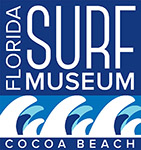

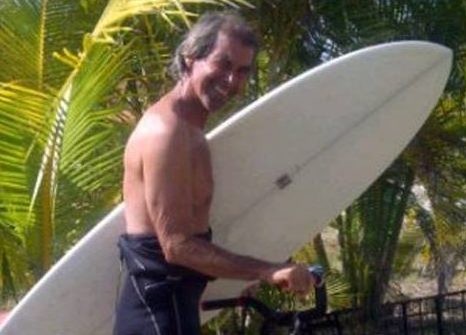
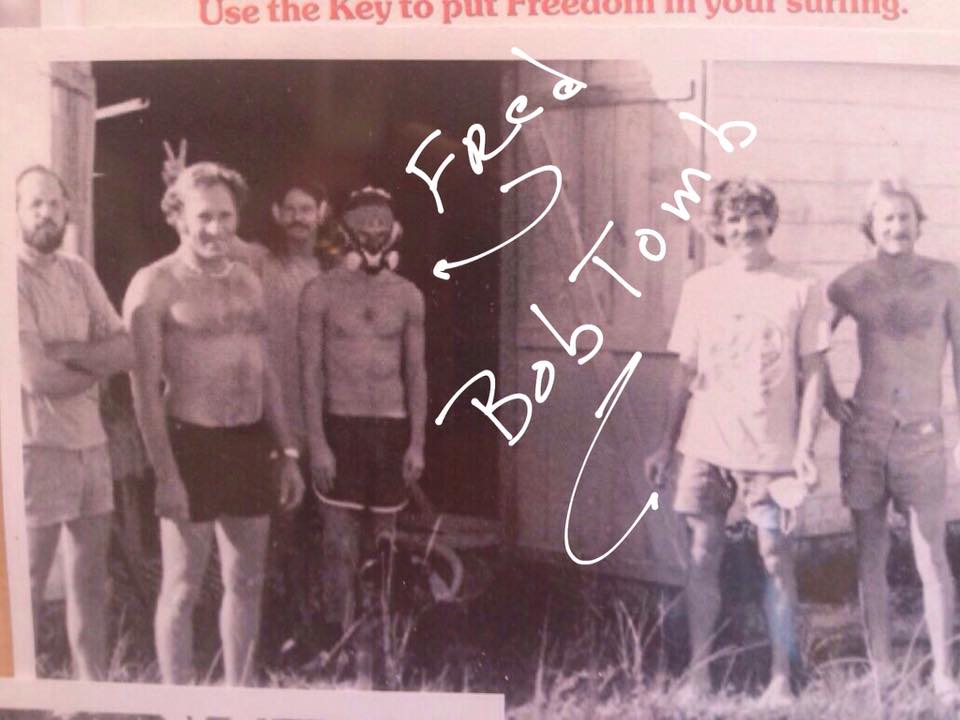
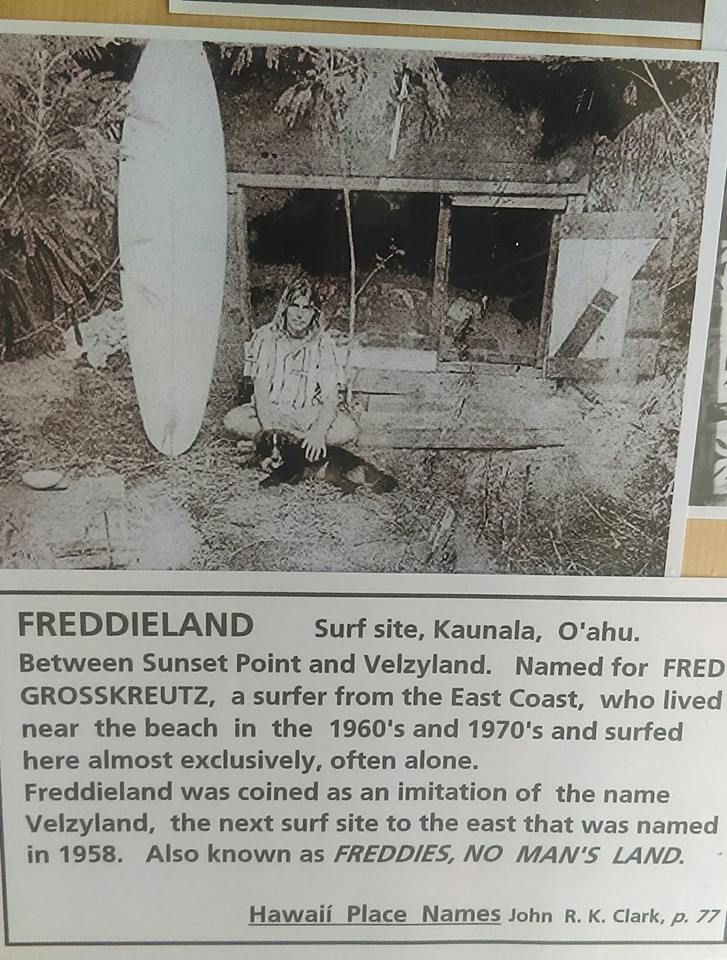
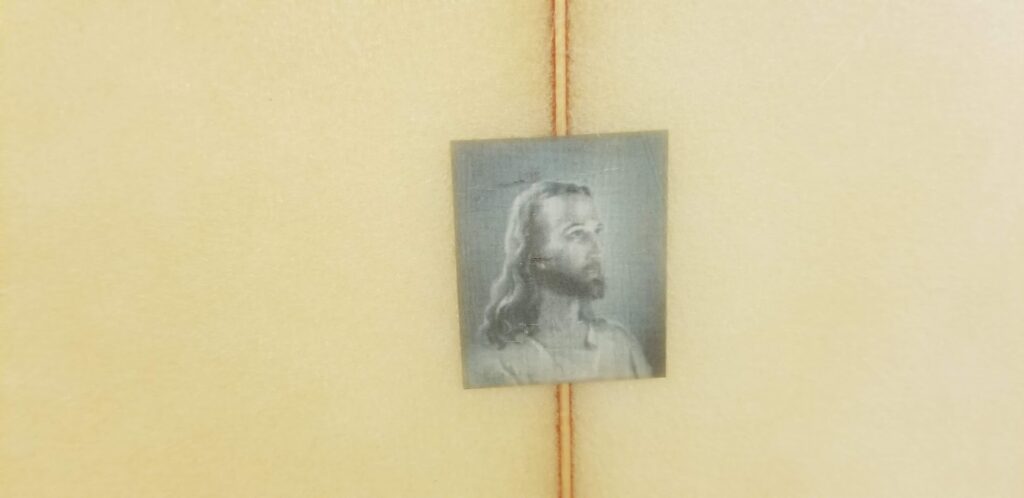

Rest In Peace at the Lords side Freddie.
May your family find strength knowing you are at peace.
We’ll Surf again one day.
With respect an friendship
Patricia Scholtz
Sorry, to hear about the passing of Freddie.RIP. Hope he gets acquainted with other surfers in heaven.
This is beautiful. Thank you for putting this together for us.
Fred took me as a friend when I was first getting stoked on twins. Invited me to thanksgiving with his family when I was young. I still have one of his personal boards with the Jesus picture that he gifted me with and I can’t express the magic and influence that had on me. Years went by and everyone I’d see Fred he’d have kindness and wisdom and faith to share. I’d look forward to seeing him walking his dog and checking the surf. I still look for him. My heart goes out to his wonderful family. ??
Freddie, The humblest guy, no ego at all. He lived down the street on Aveue A in Melbourne Beach and he would come by the house to talk story with my dad. I was a kid at the time. I always thought, this is a cool guy and I noticed that he was different than most guys. The kind of person that stood out for all the right reasons. Money was never a driving factor for him. He lived life simply and passionately. Experiences, friends and family were his most treasured things on this earth. I still see Freddie and his family as the most beautiful and inspirational families to this day. God bless them always. ????
A wonderful story of a Great Man.
I lived in a multi unit apartment house in Cocoa Beach in about ‘72. Roger Bakst and Freddy has the two apartments downstairs from me.
On one of his trips back to CB from Kauai, Freddy introduced me to an idea he had been playing with. In the Islands called “Finger Fins” normal length fit but only as wide as two fingers. With practice you could break the fin loose and do 360s pretty much at will forward backwards it didn’t matter. It was so much fun to learn to use it. And Freddy was always there to encourage and advise about what I was doing wrong or could improve! A super mellow ego-free individual. We’d all hang out at Sunshine Surfshop with Sam Gornto, Claude Codgens,Roger Bakst and bible study.
I went back to L.I. For the summer and won a bunch of contests because of Freddy and the finger fin.
When I came back Freddy was off to the Islands and The Sunshine Chapel had moved into the 4th Street Church.
An absolutely wonderful part of my youth but, I never saw Freddy again and never got to thank him for all the wonderful teachings and memories!
Rest In Peace my friend May the Lord Bless and Keep you!
Thanks for the great story about Freddie!